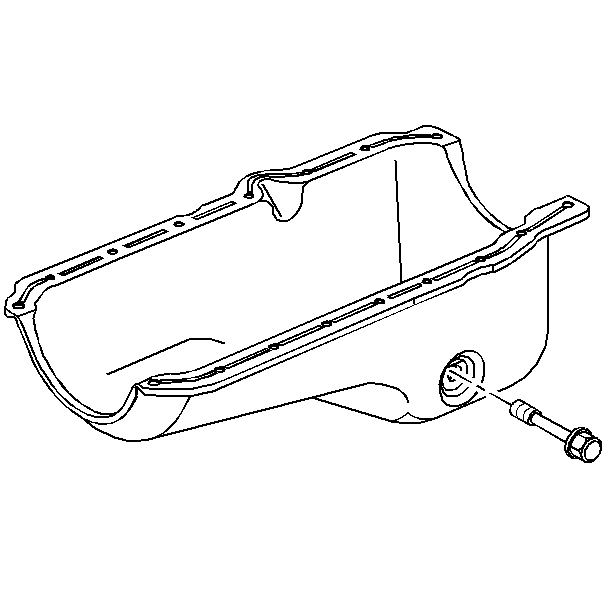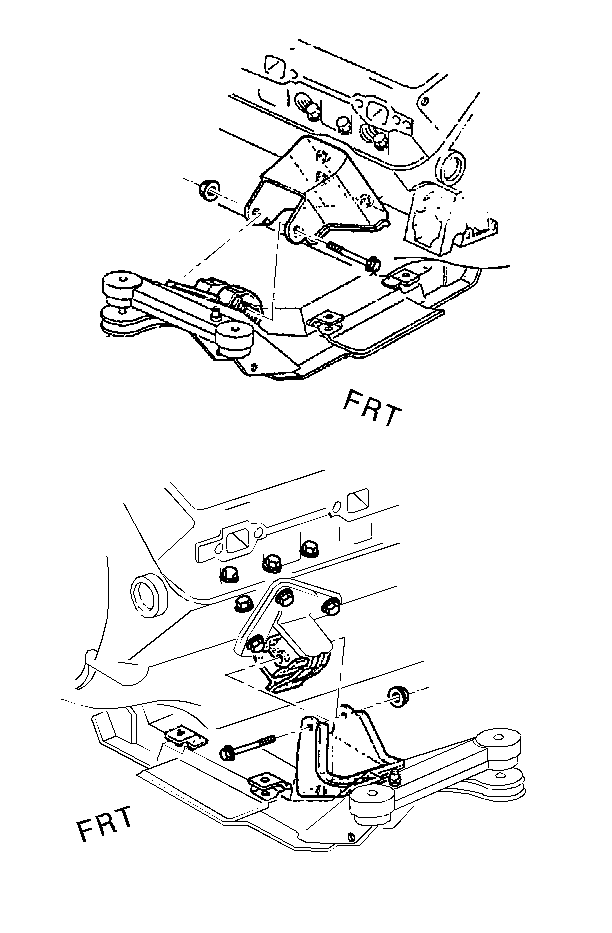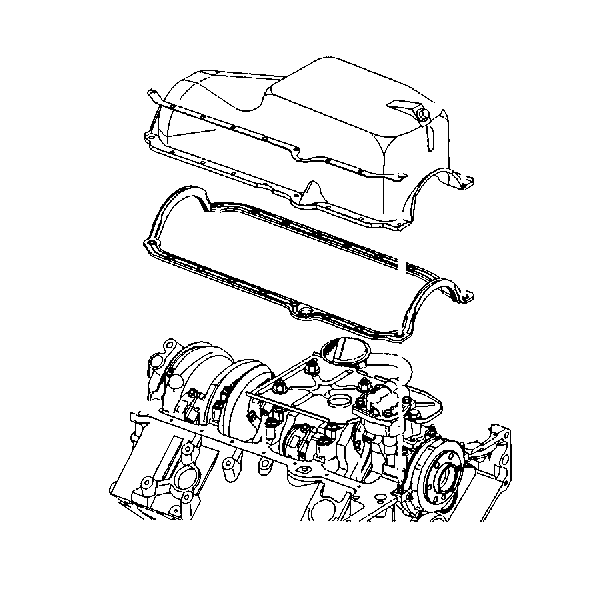Removal Procedure
- Disconnect the negative battery cable. Refer to
Caution: Unless directed otherwise, the ignition and start switch must be in the OFF or LOCK position, and all electrical loads must be OFF before servicing any electrical component. Disconnect the negative battery cable to prevent an electrical spark should a tool or equipment come in contact with an exposed electrical terminal. Failure to follow these precautions may result in personal injury and/or damage to the vehicle or its components.
in General Information. - Remove the air intake duct.
- Raise and suitably support the vehicle. Refer to SECTION 0A.
- Drain the engine oil.
- Drain the coolant. Refer to Refer to Cooling System Draining and Filling in Engine Cooling.
- Remove the oil level sensor electrical connector.
- Remove the oil level sensor from the oil pan.
- Remove the catalytic converter. Refer to Catalytic Converter Replacement in Engine Exhaust.
- Remove the exhaust pipe hanger bolt and reposition the pipe.
- For vehicles with an automatic transmission, remove the transmission fluid cooler lines from the clip at the oil pan.
- Remove the starter motor.
- For vehicles with an automatic transmission, remove the converter cover bolts and the cover.
- Remove the engine mount through-bolts.
- Raise the engine with a jacking fixture.
- Remove the oil pan bolts, the studs and the nuts.
- Remove the oil pan reinforcements and the oil pan gasket.
- Rotate the crankshaft to reposition the counterweights if necessary.
- Clean the oil pan and the engine block gasket surfaces.
- Apply a small amount of the sealer, GM P/N 12346004 or the equivalent, to the front cover and the engine block junction. Apply sealer 25 mm (1 in) in either direction of the radius cavity of these junctions.
- Apply a small amount of sealer, GM P/N 12346004 or the equivalent, to the rear oil seal housing and engine block junction. Apply sealer 25 mm (1 in) in either direction of the radius cavity of these junctions.





Installation Procedure
- Install the following parts:
- Install the oil pan nuts, the bolts, and the studs.
- Lower the engine.
- Install the engine mount through-bolts.
- Install the oil level sensor to the oil pan.
- For the automatic transmission, install the converter cover and the bolts.
- Install the starter motor.
- Install the exhaust pipe hanger bolt.
- Install the catalytic converter. Refer to Catalytic Converter Replacement in Engine Exhaust.
- Install the oil level sensor electrical connector.
- Lower the vehicle.
- Install the air intake duct.
- Connect the negative battery cable.
- Refill the engine with oil.
- Refill with coolant. Refer to Refer to Cooling System Draining and Filling in Engine Cooling.

| • | The oil pan gasket |
| • | the oil pan |
| • | The oil pan reinforcements |
Tighten
| • | Tighten the corner oil pan bolts and nuts to 20 N·m (15 lb ft) |
| • | Tighten the remainder of the oil pan bolts and studs to 12 N·m (106 lb ft) |
Notice: Use the correct fastener in the correct location. Replacement fasteners must be the correct part number for that application. Fasteners requiring replacement or fasteners requiring the use of thread locking compound or sealant are identified in the service procedure. Do not use paints, lubricants, or corrosion inhibitors on fasteners or fastener joint surfaces unless specified. These coatings affect fastener torque and joint clamping force and may damage the fastener. Use the correct tightening sequence and specifications when installing fasteners in order to avoid damage to parts and systems.

Tighten
Tighten the engine mount through-bolts to 95 N·m
(70 lb ft)

Tighten
Tighten the oil level sensor to 22 N·m (16 lb ft)
Tighten
Tighten the converter cover bolts/screw to 10 N·m (89 lb in)
